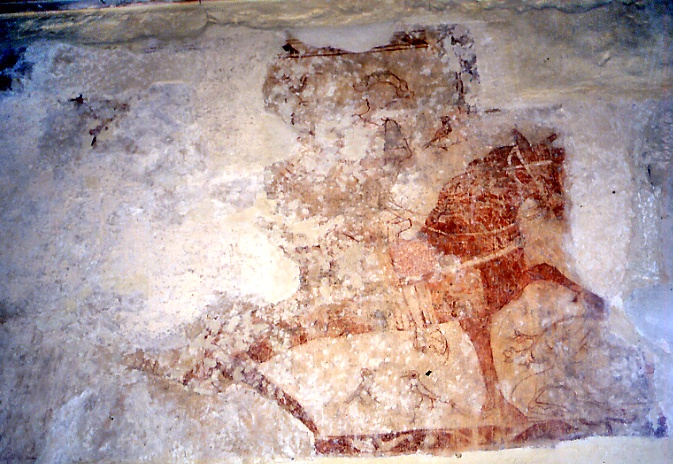Barton, Cambridgeshire (†Ely) earlier C.14
St George and the Dragon

St George and his horse in triumphal pose at Barton. This painting is far too early to be associated with the English victory at Azincourt, but it has a celebratory air, and it may commemorate some earlier significant success during the Hundred Years War such as the definitive battle at Poitiers in 1356, after which the French king Jean le Bon was captured and later ransomed for an enormous payment.
Not much is left of George – his head with its ‘pageboy’ hair, and one armoured and spurred leg and foot – but his horse is painted as both brawny and spirited, as medieval warhorses were bred to be. What is left of the folded, flattened and obviously defeated dragon cowers at the right, seemingly about to be crushed into oblivion by the horse. Much more unusual than that, though, is the inclusion of two birds, facing each other on the ground beneath the horse’s belly; it seems to be a significant detail, but precisely what it signifies defeats me entirely. Proverbial reference suggests itself – ‘To kill two birds with one stone’ – for example, variants of which are found in French and Latin from the classical era on, but certainty is unlikely. But it is a fact that the English also captured the strategically important town of Calais at this time – a king’s ransom and a vital beachhead were achieved in a single campaign – so the proverb is apposite. Intriguing, but incapable of proof, as so often.
The painting joins two others at Barton on here for some time. They are St Dunstan, and St Antony, with his attribute, the pig. Neither is at all commonly found – indeed these two may be the only paintings of them left in the English church now.